The Story of Alfred Kovner
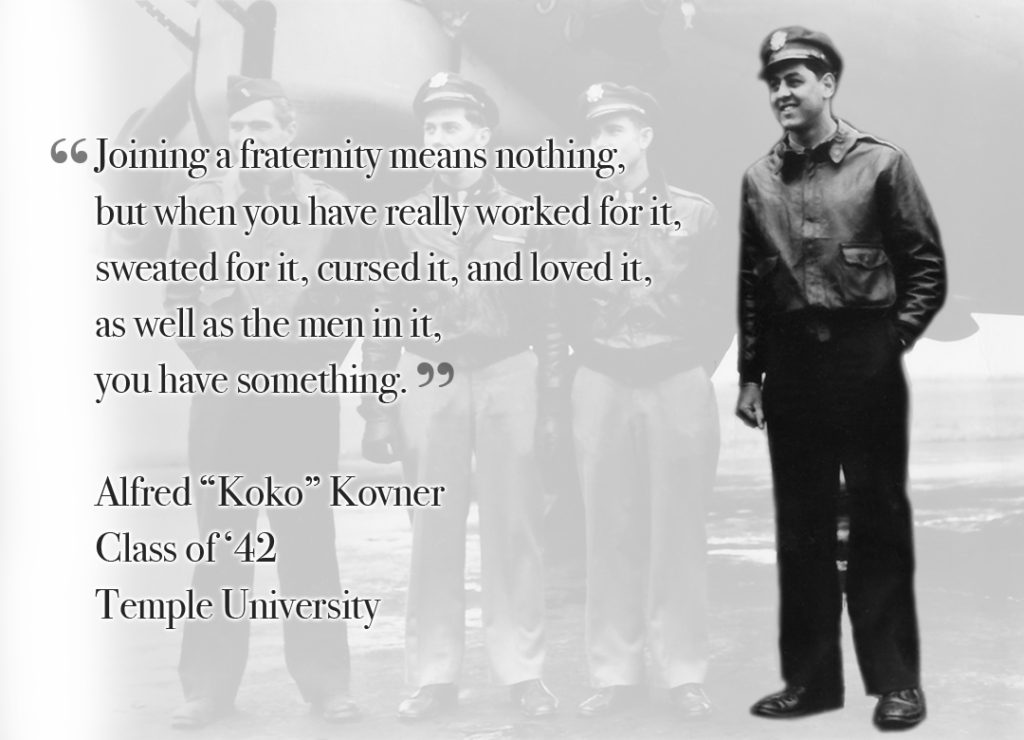
Joining a fraternity…
Alfred Kovner came to Temple University from his hometown of Brockton, Massachusetts in 1938. In most respects he was no different than any other college freshman — far from home at an urban campus, he was seeking friends and a place to fit in. He found this at Pi Lambda Phi.
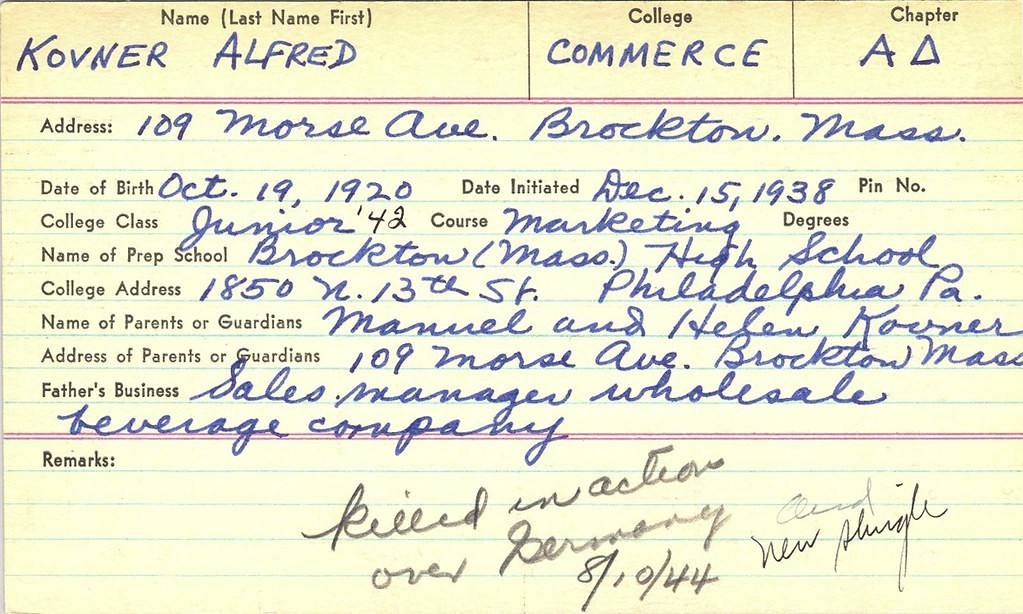
Kovner noted, “my first recollection of fraternity is Sy Hittleman staying up all through the night and having me convinced by 7:00 in the morning that I was going to join Pi Lambda Phi if for no other reason than to have him as a close friend. That was rushing par excellence.”
And so, Kovner’s affiliation with Pi Lam began. He came from a modest background, worked his way through school, and was an average student. But fraternity was a passion for Koko. To his friends and brothers, he was known as “Koko” or “Koke.”
The men who were fortunate enough to know Kovner found him to have wisdom beyond his years, strength of character, leadership and humility. He had qualities Pi Lam brothers strive to emulate.
Read what others had to say about Kovner
WWII: Service to Country
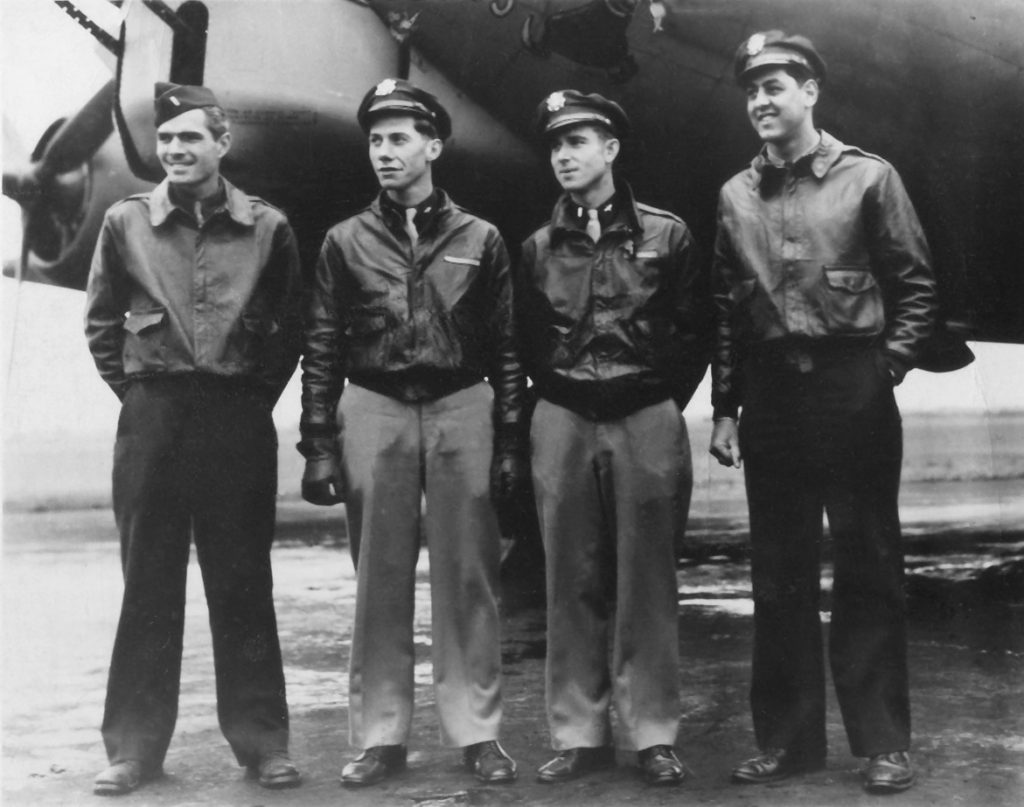
In 1942 with graduation approaching, Kovner was faced with a world at war and decisions to make. He wrote, “and then War came and we all wondered what we were doing in school, and what we were going to do in June.” Like so many young Americans who were driven by their sense of honor and duty, he chose to enlist.
The Army Air Force was Kovner’s service branch of choice. He went through induction, basic training, and classification tests that determined his eventual assignment. From Selman Field in Louisiana he wrote, “After all kinds of mental, physical and psychological exams… I was sent here to try to become a navigator.”
Following rigorous physical, scholastic, pre-flight, gunnery, and advanced navigation training, he was transferred to Dyersburg Army Air Base in Tennessee, where he was teamed up with the crew he would befriend and soon fly into combat with. As Kovner prepared for his overseas deployment, he wrote, “I know I have a hell of a big job ahead of me and I am training hard to set myself for it.”
Kovner was assigned to the 8th Air Force, 91st Bombardment Group, 322 Bomb Squadron, based in Bassingbourn, England.
The 8th Air Force was primarily employed in the daylight bombing campaign against German industrial and military targets, and suffered over half the casualties inflicted on the entire USAAF in WWII. The young men who flew B-17s over Germany in World War II faced terrible odds. The chance of surviving the obligatory twenty-five missions before earning a ticket home without death, injury, or imprisonment was one in three.
The Eighth Air Force vs. The Luftwaffe – Chances of Survival
First Assignment: B-17 Superstitious Aloysius
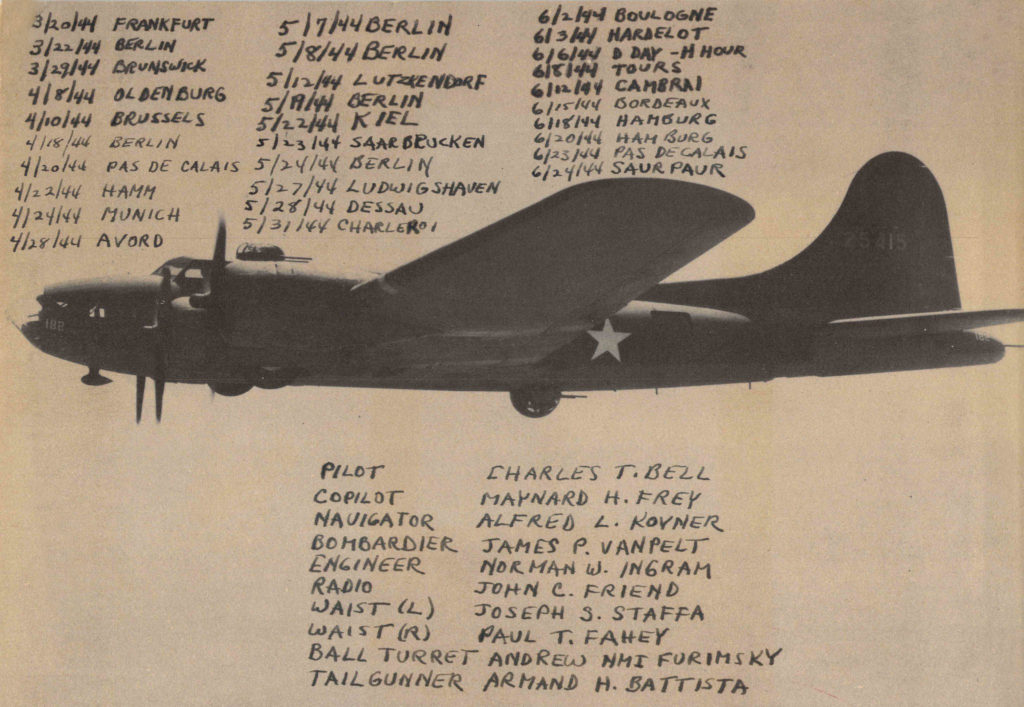
In February 1944, Kovner had his first test navigating a B-17 over the North Atlantic from Kearney, Nebraska to Prestwick, Scotland. Following further training in England, Kovner and crew reported for duty at Bassingbourn, where in March, they were assigned to fly the B-17G Superstitious Aloysius. The plane name and nose art was borrowed from a good luck card received by one of the crew members.
The crew of the Superstitious Aloysius spent every hour getting acquainted with each other and the aircraft, practicing formation flying, orientation, and bailout procedures in preparation for combat.
Oldenberg, Germany – April 8, 1944
WWII fliers referred to what they thought would be an easy mission with little resistance as a “milk run,” a reference to walking to the store to buy milk for the family. For the crew of Superstitious Aloysius, their first mission would be anything but a milk run.
Kovner’s first combat mission was to Oldenburg, Germany on April 8, 1944. After dropping their payload, the bomber took heavy flak over target and lost an engine. Falling behind the squadron, the plane was a target for ground fire. They were peppered with flak that resulted in more than 200 holes in the fuselage, wings, and nose. The plane made it back to base safely, but both Kovner and Van Pelt, the bombardier, were wounded.
Listen to the account of the Oldenburg mission as told by pilot Charles Bell
Between April to June 1944, Kovner flew in almost every major mission allotted to the 91st Bomb Group with the crew of the Superstitious Aloysius.
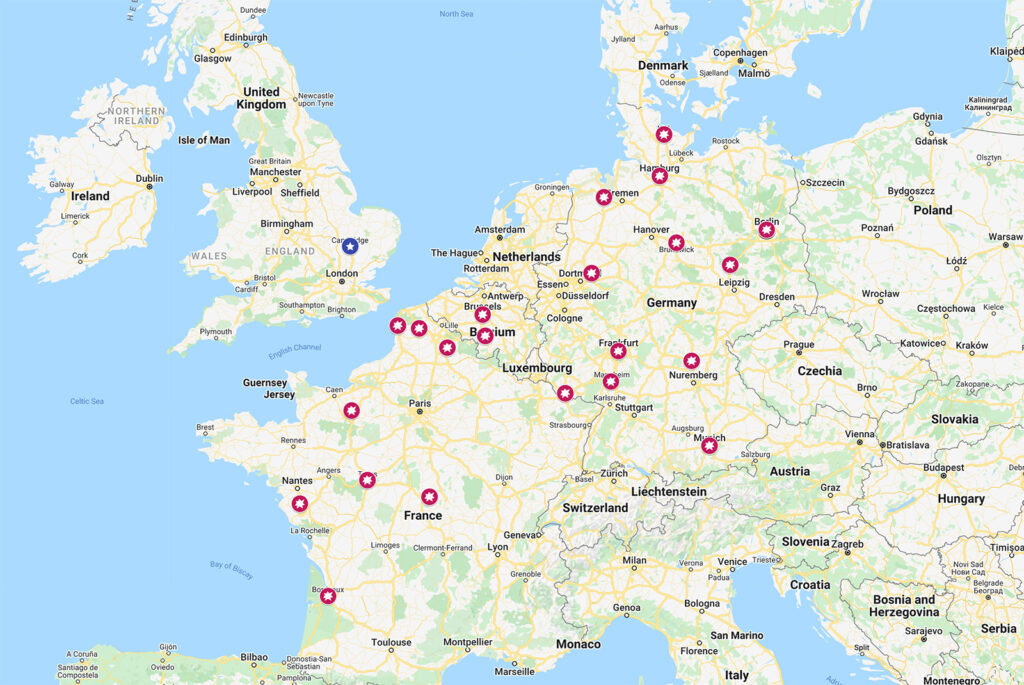
A new assignment: Sleepytime Gal
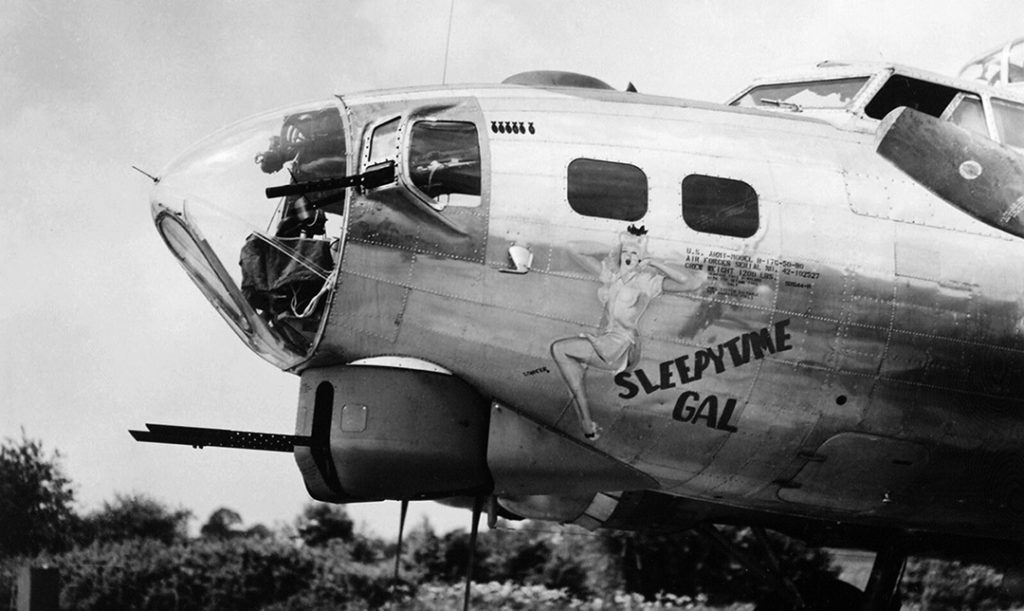
In June 1944, Kovner was promoted from Flight Officer to 2nd Lieutenant and was assigned to the B-17G Sleepytime Gal. According to his crew mate, S/Sgt Armand Battista, “the reason why we didn’t fly all of our missions together was because when a plane needed a replacement, they would just detail a gunner, pilot or navigator to another plane.” He added, “too bad they broke up our group. I never felt comfortable when I flew with other groups.”
In his new aircraft assignment, Kovner’s aptitude and experience were quickly recognized. His plane flew “high or low group lead” in the formation for most of the missions in June 1944. His position as squadron navigator meant that he flew in the lead aircraft that set the course for the entire group. The co-pilot of Sleepy Time Gal, Lt. Ed Waters said of Kovner, “He was an able navigator, bright. He lead his class in navigation school.”
Mission 183: Berlin
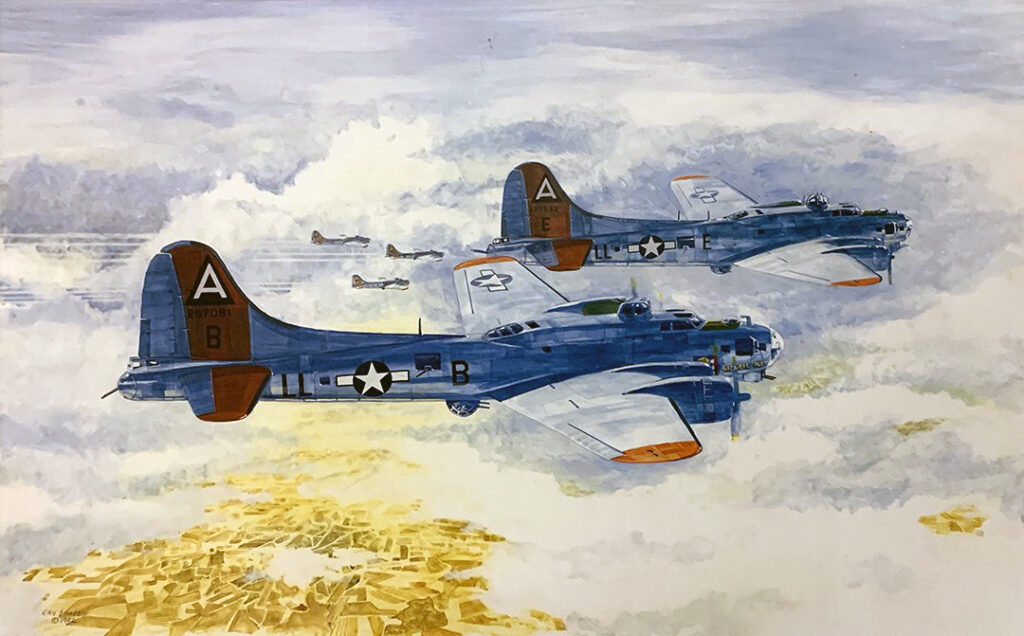
In the largest daylight mission assembled by the 91st Bomb Group, the 322 Bomb Squadron was tasked with bombing railroad marshalling yards in Berlin on June 21, 1944. Once again, Sleepytime Gal flew low lead for the group.
Before reaching their target, the squadron was attacked by a large formation of Messerschmitt “Hornisse” 410s, twin-engine fighters. The Me 410s streaked through the formation two and three abreast, firing at the bombers with 20mm cannon. Kovner’s plane was hit in the leading edge of the left wing and took direct hits to the No. 3 engine causing it to burst into flames.
After the plane caught fire, co-pilot Waters recalled, “I gave the ‘bail out’ order.” As he climbed to his escape hatch, Waters checked the nose of the plane to find Kovner alone at the front hatch. He did not see Kovner bail out. The bombardier, Van Pelt also motioned to Kovner to follow him. But when he landed, he didn’t see Kovner.
Sleepytime Gal went down. As it dropped out of formation, a massive explosion tore it to pieces. Fate decided which men the explosion would kill and which would be flung clear.
Only four members of the crew escaped the aircraft. Abbott (pilot), Waters (co-pilot), Van Pelt (bombardier) and Hettinger (waist-gunner) bailed out safely. They were taken prisoner and initially held at Stalag Luft 3 in Sagan, Poland before being moved southwest to Stalag 7A in Moosberg, Germany. They were eventually liberated by Patton’s 3rd Army on April 29th, 1945, just days before V.E. Day.
Waters and Battista speculated that Kovner may have been fearful of his fate in the hands of German captors. Battista recalled, “I always got on his back about him wearing the Star of David when we flew missions, because I knew if we bailed out, they would shoot him. I believe that must have been a reason why he wasn’t a P.O.W.”
Kovner was awarded the Purple Heart with Oak Leaf Clusters and the Air Medal with two Oak Leaf Clusters.
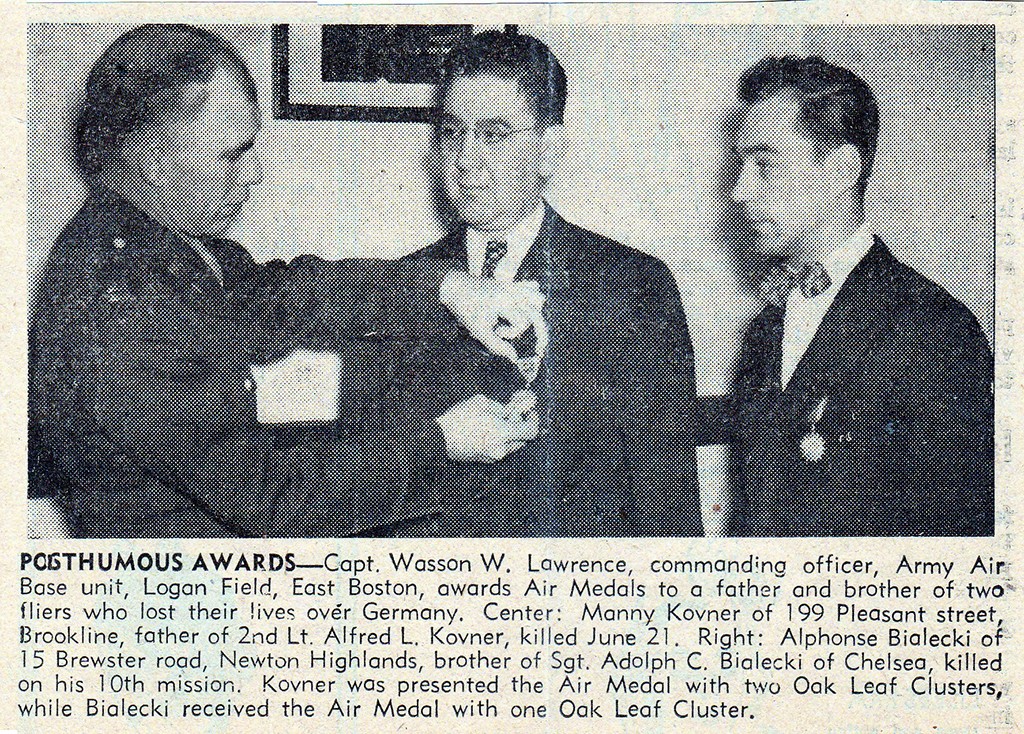
He was buried at Lorraine American Cemetery in St. Avold France. Like so many other patriotic Americans, Kovner never returned home, but his strength, courage, and convictions live on through Pi Lambda Phi.
Letters of Reflection and Hope
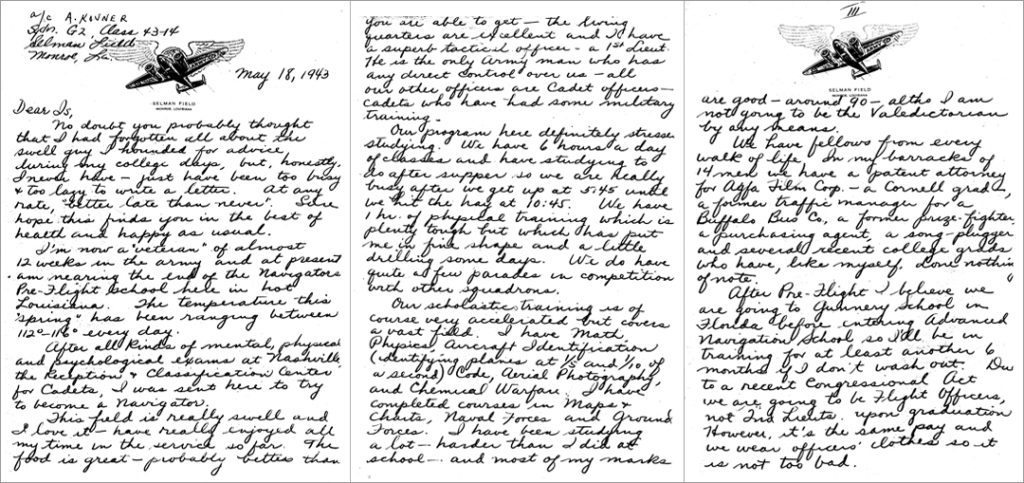
When Kovner was a leader in the house, he befriended Isadore Wachs, a Penn graduate who served as PA Alpha Delta’s Chapter Advisor. Wachs was a confidant and mentor to Koko.
Even when overseas fighting for his country during WWII, Kovner thought of fraternity. In his letters to Wachs, he spoke of struggling to keep a chapter afloat, and of restarting the chapter after it closed during the war. He discussed the development of his leadership skills, and the furtherment of Pi Lambda Phi. Kovner’s spirit lives on through his profound words in his correspondence with Wachs.
Quotes from Kovner’s Letters to Isadore Wachs
“When you are in the army you think back a lot to civilian life and for me that includes my college life. And when I think of college, I have to think fraternity, not classes. I can truthfully say Pi Lam was the best thing that ever happened to me.”
~ Alfred Kovner, May 18, 1943. Selman Field, Louisiana.
“I am training for the European theater. I know I have a hell of a big job ahead of me and I am training hard to set myself for it.”
~ Alfred Kovner, December 5, 1943. Dyersberg Army Air Base, Tennessee.
The Kovner Quote
No one from the PA Alpha Delta chapter has influenced so many Pi Lam brothers. Kovner’s best known legacy is an eloquent quote that truly encapsulates the fraternal experience.
“Joining a fraternity means nothing,
but when you have really worked for it, sweated for it, cursed it, and loved it,
as well as the men in it, you have something.”
Alfred “Koko” Kovner
Class of ‘42
Temple University
The Kovner Memorial Banquet
After Kovner’s death, Reds Blumenthal, the chapter’s rex in 1946, invited Koko’s parents to the fraternity for an unofficial dinner during which everyone spoke about what a great person Koko had been.
This was the beginning of the Kovner Memorial Banquet.
Kovner’s parents said they wanted to have an annual dinner with a special award presentation to the brother who typified Koko’s attitude and feelings about the fraternity. The next year, the Kovner’s donated $1,500 to the chapter to sponsor the dinner and award, which during the first few years was a set of luggage.
This concept and the spirit of Koko Kovner continues to be a focus of PA Alpha Delta, almost eighty years after Kovner’s untimely passing.
Memorials to Alfred Kovner
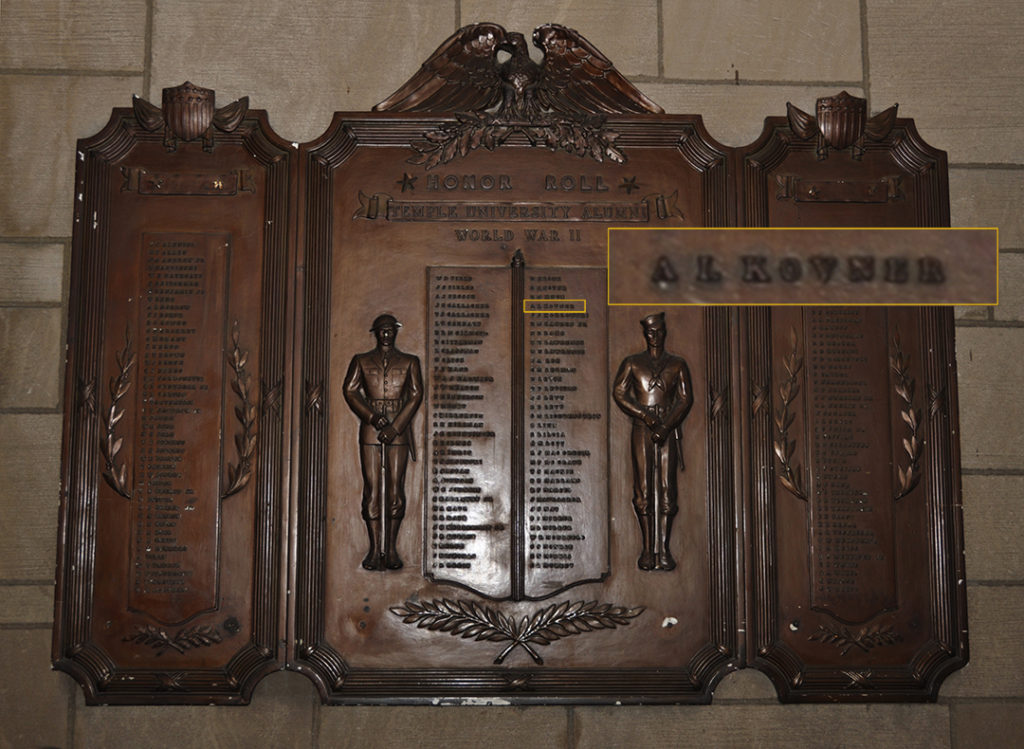

If you visit the National WWII Museum, you can see Kovner’s brick on Magazine Street at: Section: NH 11,8.
Sources
Bowden, Ray. (1993 Plane Names & Fancy Noses. Ealing, London: Design Oracle Partnership. pp 203-204, 217-219.
Havelar, Marion. (1995) The Ragged Irregulars of Bassingbourn. Atglen, Pennsylvania: Schiffer Publishing Ltd. pp 110, 132.
Bell, Charles. (July 1982) “The Life and Death of Super Al.” The Ragged Irregular, Vol. 15 (#2). pp 2-4.
Bell, Charles. (1972) Interview with Maurice Rowe.
Waters, Ed. Telephone interview with Shawn Mahoney. January 2, 2008
Battista, Armand. Emails to Shawn Mahoney. February 2008.
Kovner, Alfred. Letters to Isadore Wachs. July 1940 – December 1943.
Kovner, Manny. Letter to Isadore Wachs. January 26, 1946.
“91st Bomb Group Memorial Association.” Available at: www.91stbombgroup.com
Washington, D.C., United States National Archives. Service brief.
